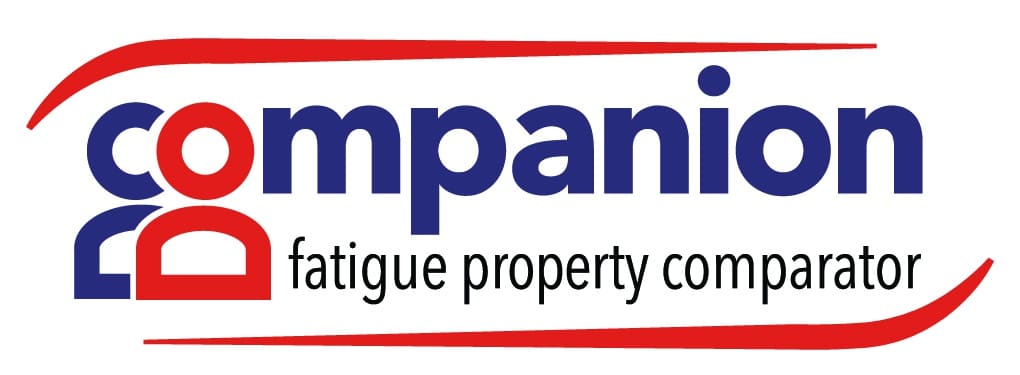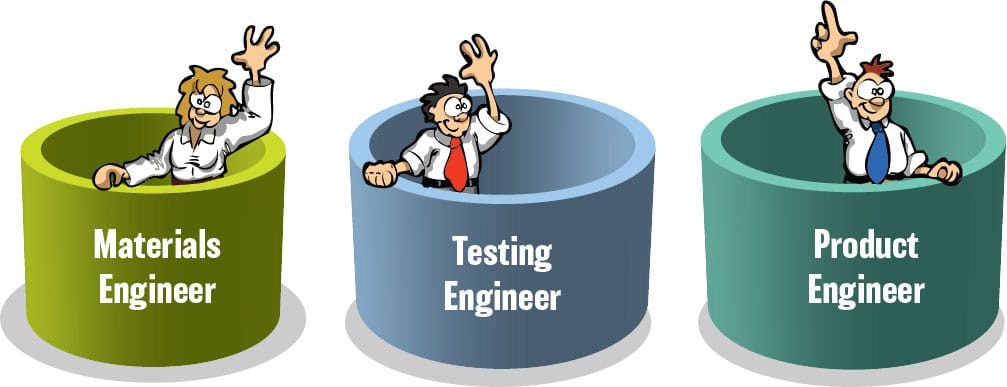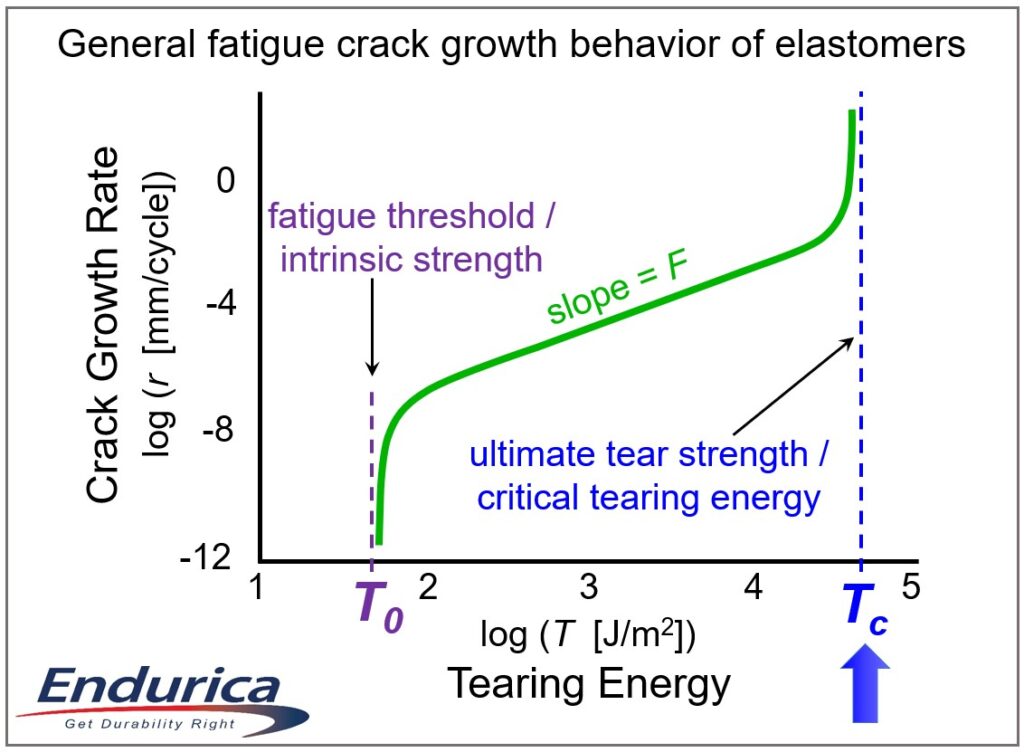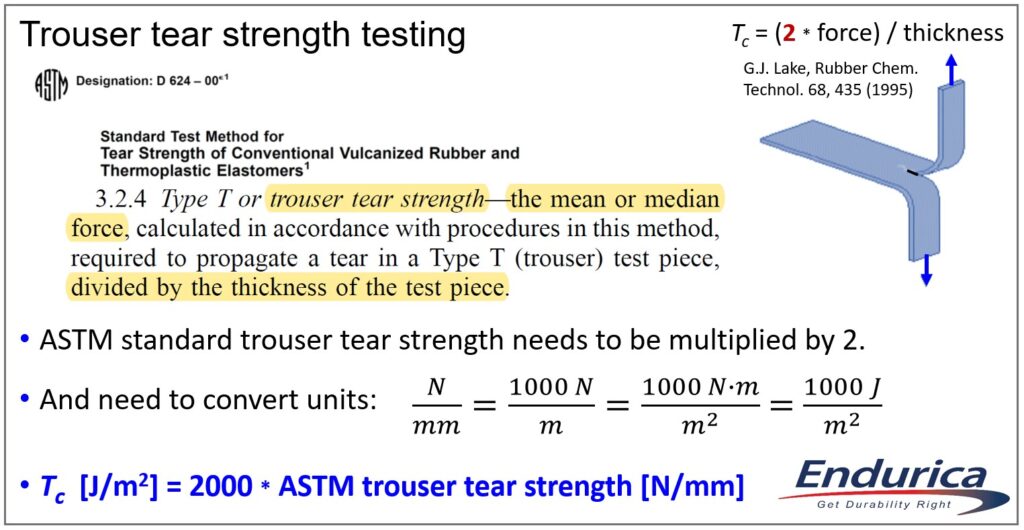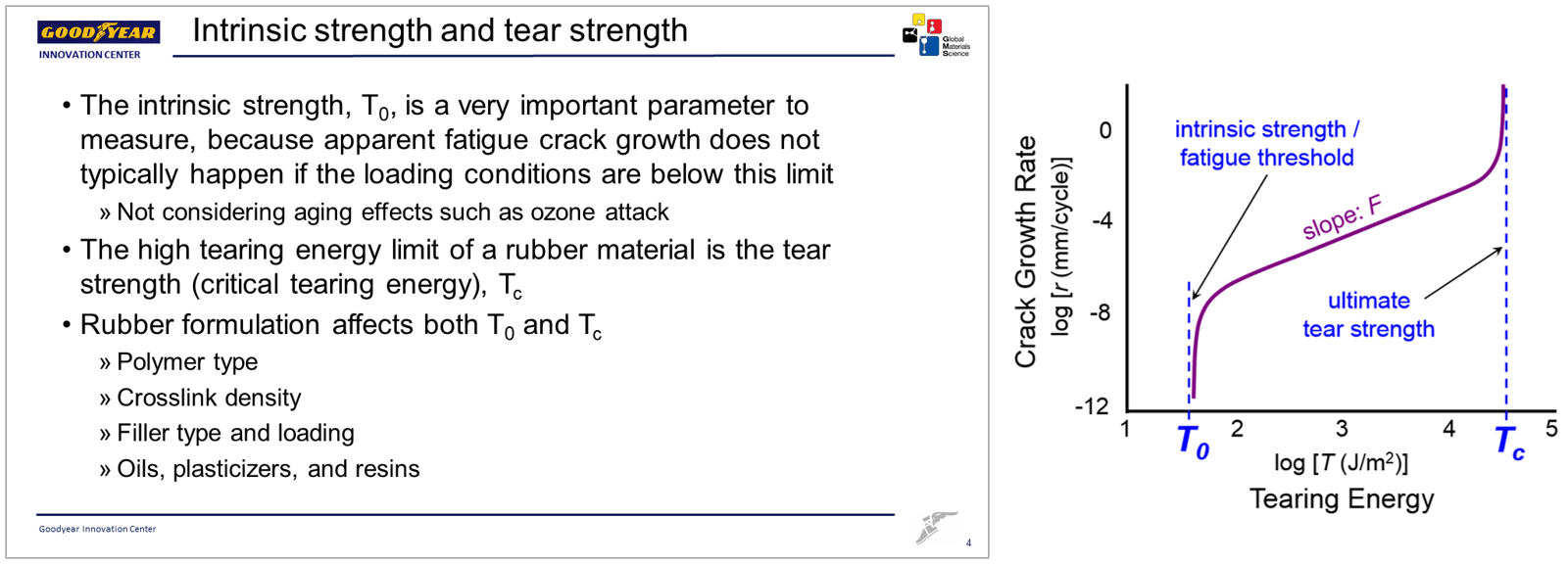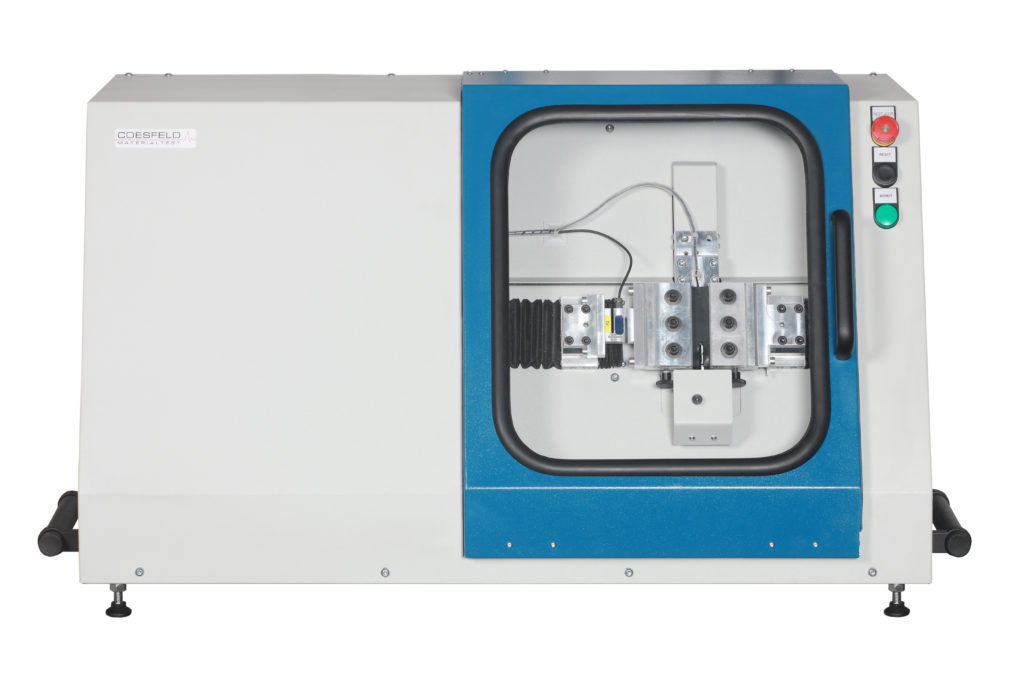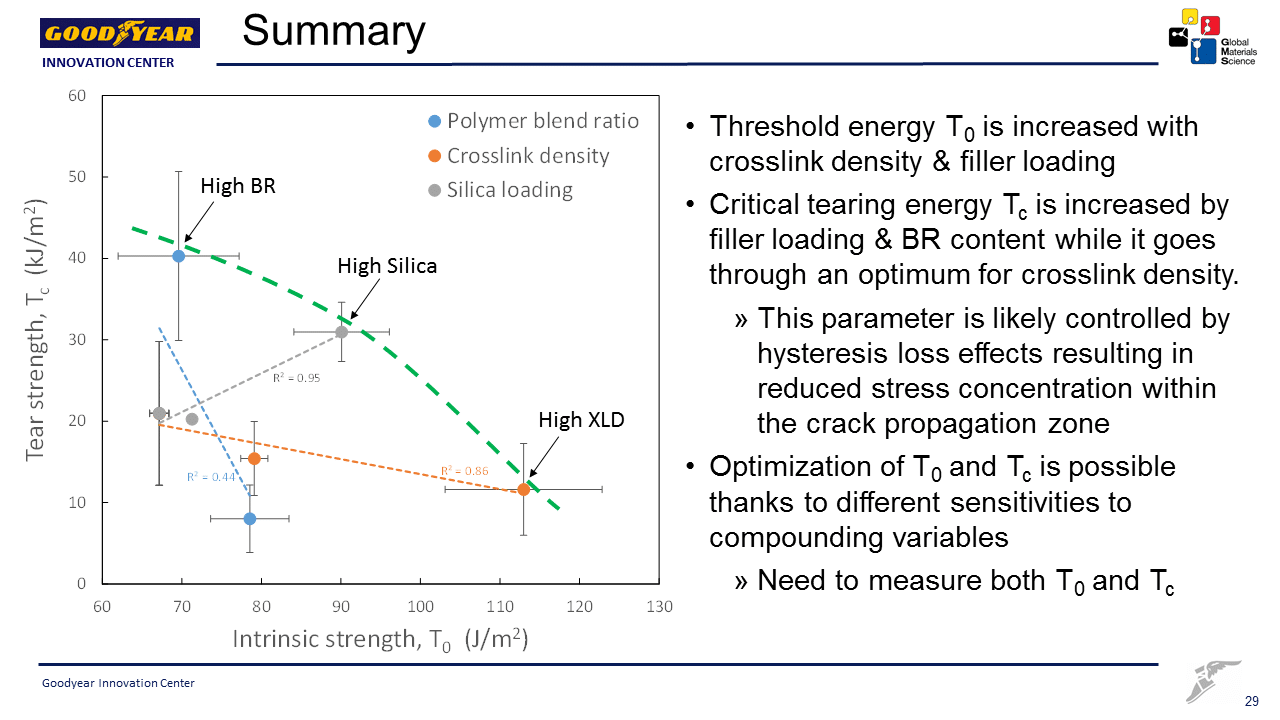There is now a one-hour test on a benchtop instrument for the rubber lab to screen materials for long-term fatigue performance. Please continue reading to learn more about this commercialization of a classical elastomer characterization methodology.
Rubber products manufacturers and raw materials suppliers seeking improved materials for next-generation applications depend on lab tests to predict end-use performance. These predictive tests should balance accuracy, relevance, and testing time. The testing time component is particularly challenging when the performance characteristic of interest is fatigue lifetime. The image of traditional fatigue testers chattering along for days or weeks comes to mind for those of us with experience in industrial rubber labs. The time consideration is the reason why tensile stress-strain testing (stretching a material to high strains until failure) is the most common physical test for the fracture behavior of rubber, in clear contrast to the most prevalent application condition for rubber products which is cyclic loading (fatigue) at much lower strains.
Fatigue crack growth is a key element of elastomer behavior that must be determined in order to predict durability, as illustrated below. For example, fatigue crack growth (FCG) testing provides the FCG rate law that is essential for predicting when and where cracks will show up in rubber products using Endurica’s elastomer fatigue software for finite element analysis [https://endurica.com/integrated-durability-solutions-for-elastomers/]. Endurica has developed a finitely scoped, reduced variability measurement approach1 which is used in our Fatigue Property Mapping testing services and is available on the Coesfeld Tear and Fatigue Analyser (TFA). Our standard FCG measurement protocol takes 20 hours of continuous testing. This testing time is very efficient for characterizing best candidate materials in the development process, but a faster test is needed for narrowing down, for example, 20 initial materials to 5 best candidates or for use in a plant lab to monitor quality of rubber compounding processes.
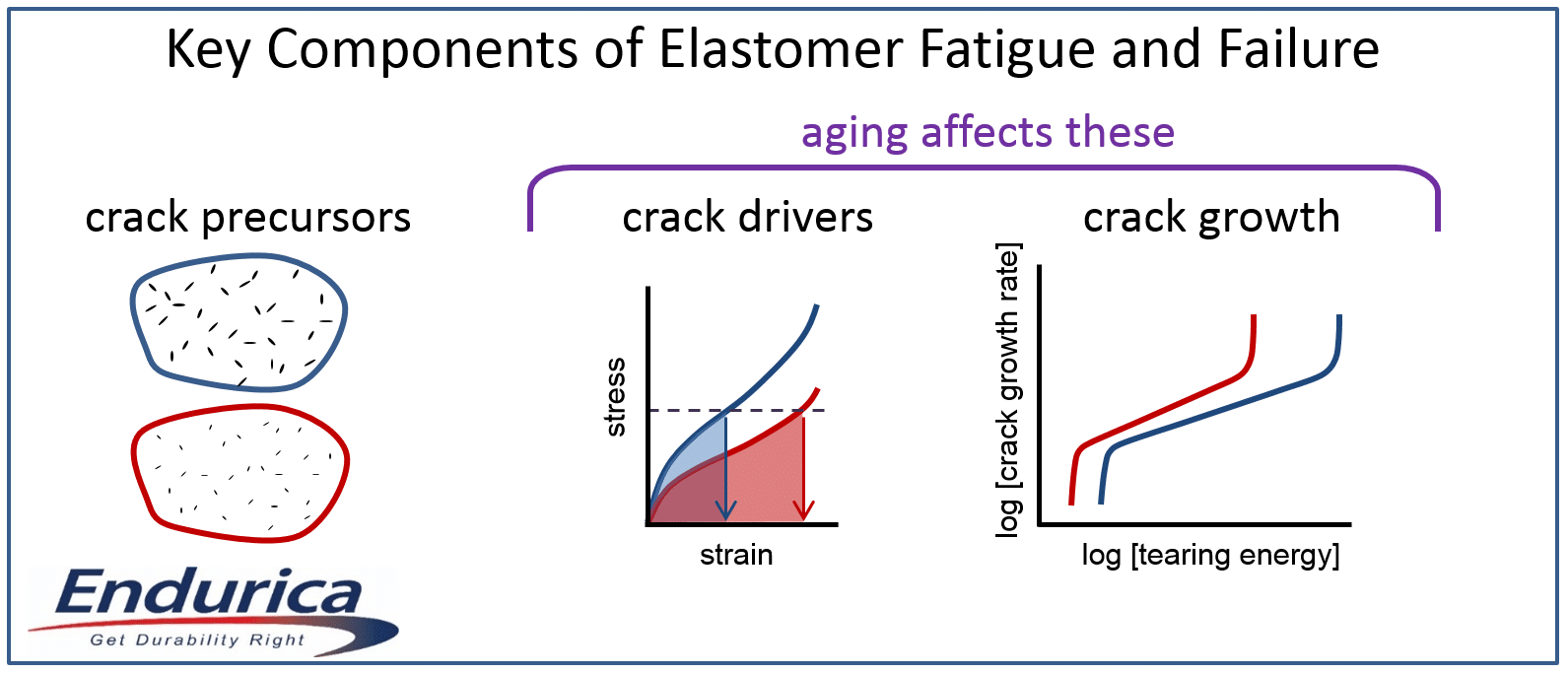
The Intrinsic Strength Analyser (ISA) is a recent addition to the durability testing solutions for elastomers. The ISA was developed through a partnership between Coesfeld GmbH & Co. (Dortmund, Germany) and Endurica LLC (Findlay, OH, USA), and this benchtop instrument employs a testing protocol based on the long-established cutting method of Lake and Yeoh.3,4 Endurica’s president, Dr. Will Mars, discusses the importance of measuring intrinsic strength (fatigue threshold) in this video on our YouTube channel which also shows some footage of the ISA in operation:
https://www.youtube.com/watch?v=BL92ppsJZfE
The fatigue crack growth curve of rubbery materials is bounded by the fatigue threshold, T0, on the low tearing energy (T) side and by the critical tearing energy (tear strength), Tc, at the high-T end. This is depicted in the generalized figure below. A streamlined one-hour procedure on the ISA can measure both T0 and Tc which can then be used to estimate the slope (F) of the intermediate FCG power law response that correlates well with the actual F from rigorous FCG testing using the TFA (see figure). More information about this quick ISA approach to characterizing rubber crack growth behavior for materials development and quality control can be found in the Annual Review 2019 issue of Tire Technology International (open access).2

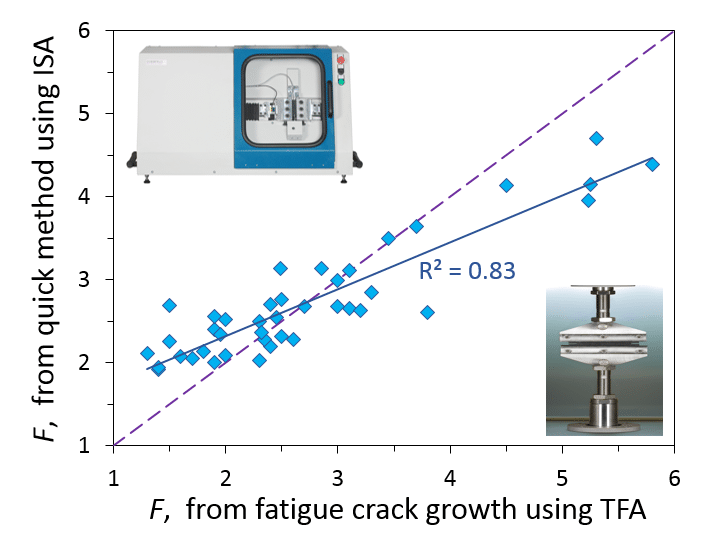
The fatigue crack growth slope, F, from the ISA should be considered an approximate value that is useful for comparing the relative FCG behavior of materials. However, the determination of T0 on the ISA is highly quantitative and the only realistic option for assessing this parameter, since the near-threshold crack growth testing on the TFA needed to define T0 would take about a month. The implementation areas for the ISA and TFA are compared in the following table. A very conservative approach to product development for elastomer durability is to create a combination of material behavior and component design that places the final operation of the rubber product below the fatigue threshold. If this is your company’s approach to engineering for durability, then the ISA is the testing instrument you need.

Crack precursor size is another key characteristic of elastomers that needs to be quantified in order to predict durability. In combination with a standard tensile stress-strain test, the critical tearing energy (Tc) from the ISA can also be used to assess crack precursor size, as we showed recently in an open access publication.5
Endurica is the exclusive Americas distributor of the Coesfeld ISA and TFA instruments. Endurica’s efficient and effective testing protocols are provided on these high-quality instruments for the rubber laboratory. To learn more about how to add these testing capabilities to your lab, please contact us at info@endurica.com.
References
- J. R. Goossens and W. V. Mars, “Finitely Scoped, High Reliability Fatigue Crack Growth Measurements”, Rubber Chem. Technol. 91, 644 (2018).
- C. G. Robertson, R. Stoček, R. Kipscholl, and W. V. Mars, “Characterizing Durability of Rubber for Tires”, Tire Technology International, Annual Review 2019, pp. 78-82.
- G. J. Lake and O. H. Yeoh, “Measurement of Rubber Cutting Resistance in the Absence of Friction”, International Journal of Fracture 14, 509 (1978).
- C. G. Robertson, R. Stoček, C. Kipscholl, and W. V. Mars, “Characterizing the Intrinsic Strength (Fatigue Threshold) of Natural Rubber/Butadiene Rubber Blends”, Tire Sci. Technol. 47, 292 (2019).
- C. G. Robertson, L. B. Tunnicliffe, L. Maciag, M. A. Bauman, K. Miller, C. R. Herd, and W. V. Mars, “Characterizing Distributions of Tensile Strength and Crack Precursor Size to Evaluate Filler Dispersion Effects and Reliability of Rubber”, Polymers 12, 203 (2020).


